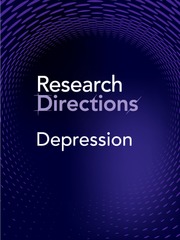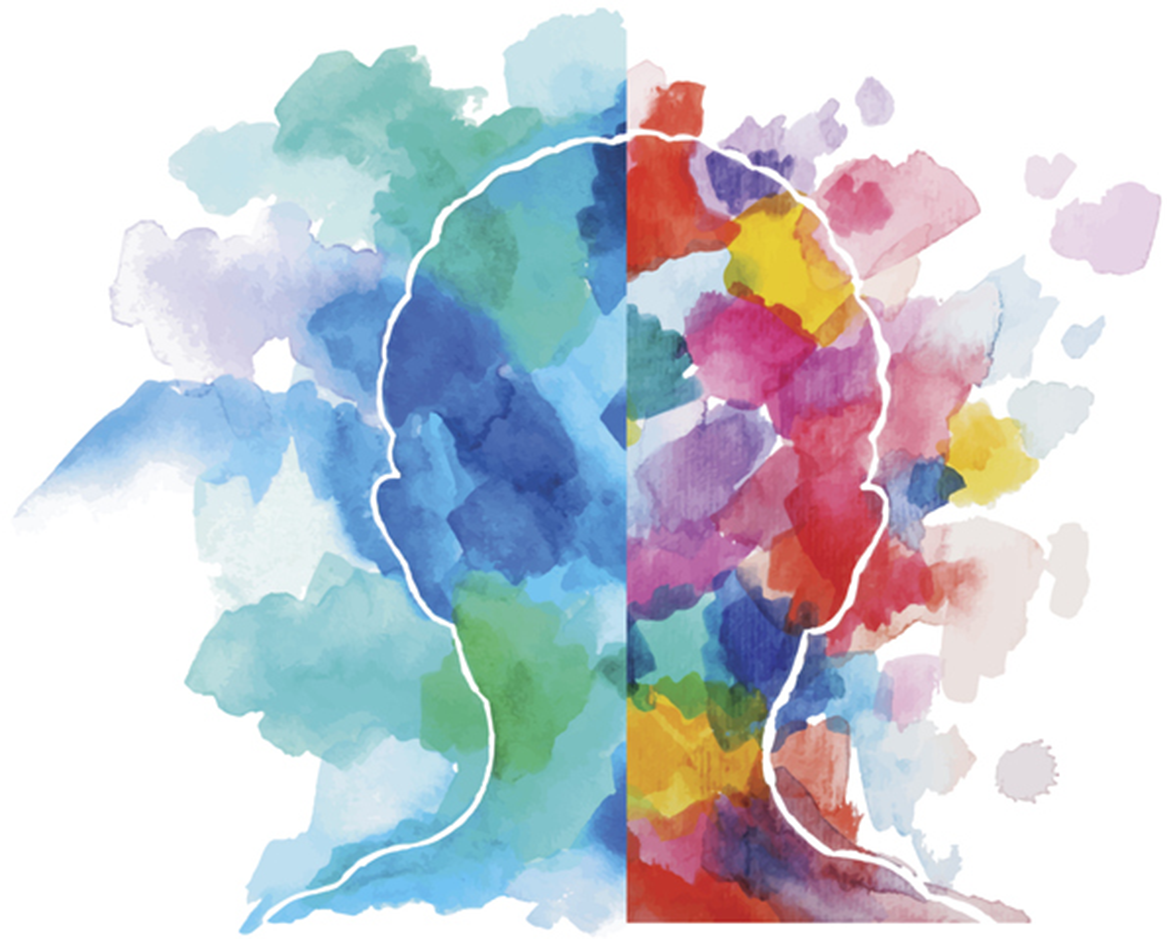Compared with other areas of mental health research that are focused on the active and early management of youth presenting in the early stages of major mental disorders, there has been a relative lack of focus on young people with emerging or established bipolar disorders. Recently, this has stimulated both international professional societies (e.g., International Society for Bipolar Disorders [ISBD] Early Intervention Task Force) and funding agencies from Canada, UK, Australia, and the USA – including the Daymark Foundation (Jain et al. Reference Jain, Rebeiz and Ritchie2023), Wellcome Trust (2022), National Health and Medical Research Council, and BD2 – to promote a focus on identifying the major challenges in this field and gathering support for novel research and clinical service programmes.
This lack of focus has been evident despite the well-recognised opportunity for delivering interventions to those who are already symptomatic (typically expressing anxious, depressive or hypomanic symptoms) (Leopold et al., Reference Leopold, Ritter and Correll2012), at-risk due to self-harming behaviours (Hawton et al., Reference Hawton, Sutton, Haw, Sinclair and Harriss2005; Carpenter et al., Reference Carpenter, Scott and Iorfino2022), engaging in concurrent alcohol or substance misuse (Sperry et al., Reference Sperry, Stromberg and Murphy2024; Chitty et al., Reference Chitty, Lagopoulos, Hickie and Hermens2013) or experiencing significant impairment in their social, education or economic roles (Carpenter et al., Reference Carpenter, Scott and Iorfino2022; Iorfino et al., Reference Iorfino, Carpenter and Cross2022; Highet, Reference Highet, McNair, Thompson, Davenport and Hickie2004). Given that there is commonly a long delay between the first onset of these non-specific difficulties and the development of a clear bipolar disorder (Scott et al., Reference Scott, Graham, Yung, Morgan, Bellivier and Etain2022), there is growing enthusiasm for the potential of early and effective interventions to substantially change the life course of those affected.
While the conceptual challenges that the field confronts are similar to those faced over the last two decades by those working with the early psychosis and clinical staging paradigms (McGorry et al., Reference McGorry, Killackey and Yung2008; Cotton et al., Reference Cotton, Jain and Ratheesh2024; Iorfino et al., Reference Iorfino, Scott and Carpenter2019; Shah et al., Reference Shah, Scott and McGorry2020; Scott et al., Reference Scott, Iorfino and Capon2024; McGorry and Hickie, Reference McGorry and Hickie2019), there are many unresolved issues here. These relate to:
-
i. Need for recognition of genuine at-risk states, especially in those individuals who do not have a clear family history of bipolar disorder (Berk et al., Reference Berk, Ratheesh and Scott2024);
-
ii. Need for clear delineation of target populations for various preventive or early intervention strategies (Miklowitz et al., Reference Miklowitz, Schneck and Walshaw2020; Scott and Meyer, Reference Scott and Meyer2020; Vallarino et al., Reference Vallarino, Henry and Etain2015);
-
iii. Agreement as to clear definitions of bipolar disorder onset (i.e., is this really dependent on a clear manic episode?);
-
iv. Uncertainty as to the optimal clinical staging model for use in early intervention research or health services development (notably, bipolar-specific or transdiagnostic; and, how to deal with child vs adolescent/youth onset of relevant phenotypes) (Shah et al., Reference Shah, Scott and McGorry2020; Scott et al., Reference Scott, Iorfino and Capon2024);
-
v. The potential role of other ancillary tests (i.e., brain imaging, neurobiological, genetic, circadian, cognitive, metabolic, inflammatory) in determining the degree of risk of disorder-onset, persistence or recurrence as well as response to available or novel treatments (Scott et al., Reference Scott, Graham, Yung, Morgan, Bellivier and Etain2022; Scott et al., Reference Scott, Kallestad, Vedaa, Sivertsen and Etain2021);
-
vi. Whether the primary focus should be on prevention and early intervention on bipolar-I disorders (with presence of a clear manic episode);
-
vii. Whether early intervention should focus largely on the youth age range (15–25 years), as it has the highest incidence of onset (Merikangas et al., Reference Merikangas, Jin and He2011), as distinct from possible onsets at other life phases (e.g., childhood, post-natal, menopausal, late life);
-
viii. The status of pre-pubertal onset disorders that are phenotypically similar and occur in high-risk groups (e.g., offspring of bipolar parents), or are associated strongly with other childhood-onset disorders, most notably attention-deficit/hyperactivity disorder or anxiety disorders;
-
ix. Lack of clear evidence of the long-term benefit of current indicated prevention or early intervention strategies, or whether some interventions (e.g., sleep–wake cycle behavioural strategies, chronobiological interventions, specific diets, melatonin-focused medications, lithium carbonate and targeted psychological interventions) have more specific benefits as compared with other more general strategies;
-
x. Choice of optimal behavioural, psychological, social or medical intervention strategies at different stages of disorder onset or progression (Ratheesh et al., Reference Ratheesh, Hett and Ramain2023), and when certain key interventions (notably lithium carbonate or other specific mood stabilisers) should be introduced (alone or in combination with other antidepressant medications);
-
xi. The potential to do harm as a consequence of early or uncertain diagnosis and resultant exposure to inappropriate interventions or societal harm;
-
xii. The degree of total health impairment, with particular emphasis on metabolic and inflammatory processes, that is inherent to the pathophysiology of these disorders;
-
xiii. Whether the focus of early intervention should be primarily on the prevention of progression to a first manic episode or on enhanced functional outcomes for all those identified as being at-risk; and
-
xiv. The generation of appropriate computational and disorder simulation models that may rapidly advance the testing of novel interventions for indicated prevention or early intervention.
So, to take the field forward, there is a clear need to investigate these issues in relevant community-based, high-risk, genetically informative and clinical cohorts. Much of the relevant work to date has focused on some very specific but unusual groups such as childhood-onset bipolar disorders (and almost exclusively within US-based centres) and the offspring of bipolar parents. Neither of these cohorts are common in the broader population at risk. Additionally, the emphasis needs to be on studies that move away from the more traditional research focus on well-established bipolar disorders in middle-aged and older cohorts. There is also a clear need to promote specific methods, especially the appropriate use of measures and categories that can be easily replicated by other research groups.
The engagement of young people with lived experiences, and their families and carers, is an essential part of this exercise, not only for the framing of the relevant questions and conduct of the research but also for driving the development of the most appropriate clinical services in the future.
How to contribute to this Question
If you believe you can contribute to answering this Question with your research outputs find out how to submit in the Instructions for authors (https://www.cambridge.org/core/journals/research-directions-depression/information/author-instructions/preparing-your-materials). This journal publishes Results, Analyses, Impact papers and additional content such as preprints and “grey literature”. Questions will be closed when the editors agree that enough has been published to answer the Question so before submitting, check if this is still an active Question. If it is closed, another relevant Question may be currently open, so do review all the open Questions in your field. For any further queries check the information pages (https://www.cambridge.org/core/journals/research-directions-depression/information/about-this-journal) or contact this email [email protected].
Competing interests
Ian Hickie is the Co-Director, Health and Policy at the Brain and Mind Centre (BMC) University of Sydney. The BMC operates an early intervention youth services at Camperdown under contract to headspace. He is the Chief Scientific Advisor to, and a 3.2% equity shareholder in, InnoWell Pty Ltd which aims to transform mental health services through the use of innovative technologies.





